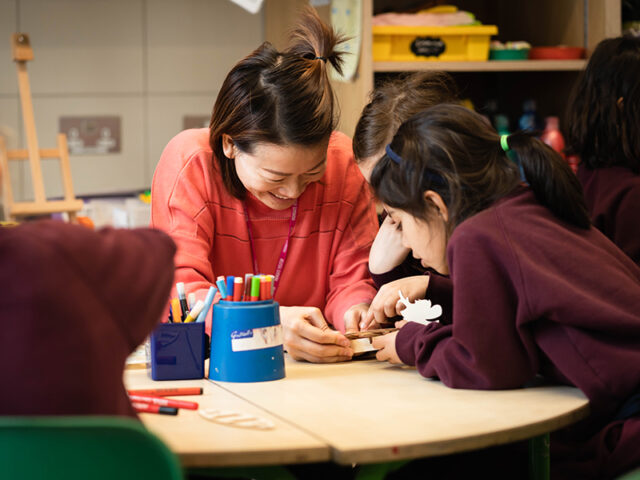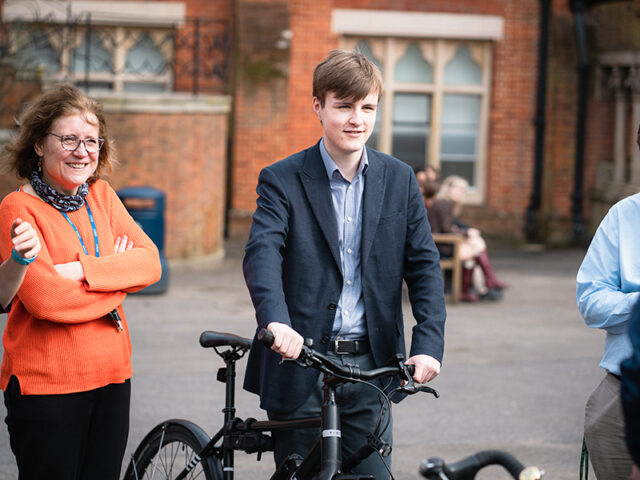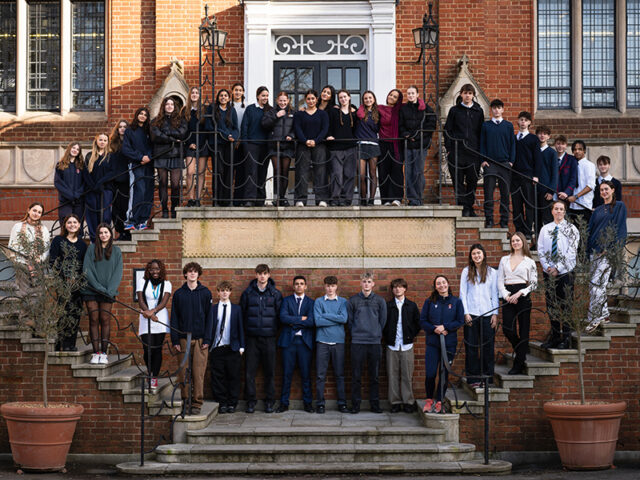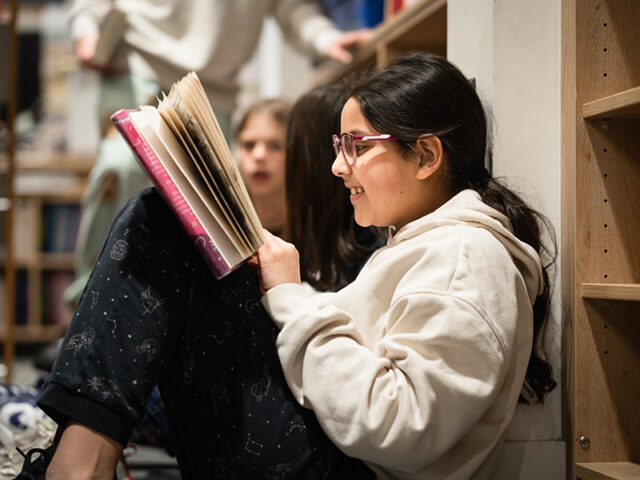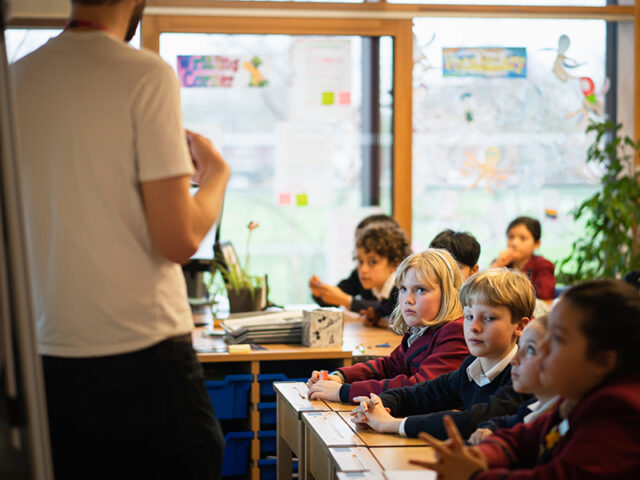‘The whole of Year 9 have been on a trip to the First World War battlefields in Northern France and Belgium. We had been studying the First World War, and particularly The Somme, in history classes, so this trip helped us further learn about what happened and where.
‘After arriving in Calais, we drove to the area around Ypres. We visited the Commonwealth War Graves at Tyne Cot, and then some German graves at Langemark. It was both shocking and interesting to see the differences between the graves of the winners and the losers of the war.
‘We briefly visited The Brooding Soldier, a memorial for a gas attack on Canadian troops. Here we learnt about gas attacks and some of us tried on different types of gas masks. We then explored some original but reconstructed German trenches. In Ypres, we saw the Menin Gate memorial for the missing in the battle of Ypres. Here, since 1928, The Last Post has sounded every evening, except during the Second World War. Before going back to our hotel, we attended a short memorial service in which we heard The Last Post.
‘The next day we visited the battlefields of The Somme. We first visited the ‘sunken road’, a trench in no man’s land used by the British to hold reserves on the first day, and then the crater of Hawthorn Ridge mine, which was set off early on the first day of the Somme and alerted the Germans to the imminent attack. Next we walked to Newfoundland Park and learnt the tragic story of the confusion over a flare, which resulted in only 68 out of the 801 men in that regiment surviving. There is a beautiful memorial of a caribou, the emblem of that regiment, baying in defiance in the direction of the German trenches.
‘In the afternoon, someone in our group got dressed in a soldier’s uniform so our guides could explain all the different elements. We also had a go at (dry)firing a Lee Enfield rifle. We then saw the Thiepval crater, the largest crater from one of the First World War mines still in existence. For our last stop, we went to the Thiepval Somme memorial, which holds 73,367 names of those missing from The Somme. We laid a wreath, some of us read out the names of the Old Cholmeleians who died, and we all reflected on our trip.
‘We owe a huge thank you to our tour guides, who were enthusiastic and knowledgeable, and to our Highgate teachers, who gave up their time to come with us. Our fascinating trip helped us all to put the facts and events that we learnt in class in to context. It helped us try to imagine something that is unimaginable and to contemplate the scale of the First World War, despite the fact that it is very hard to transpose a battlefield onto the peaceful countryside there now.’
